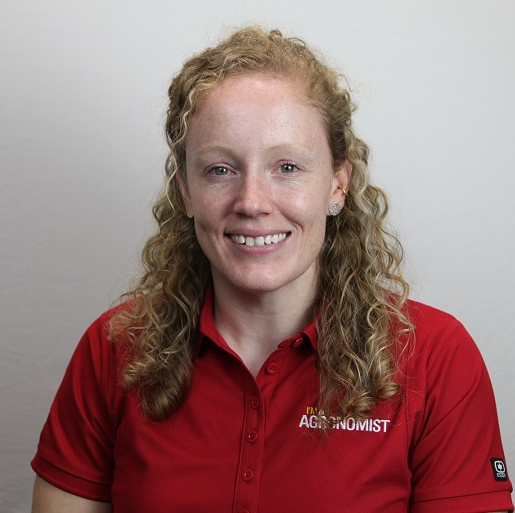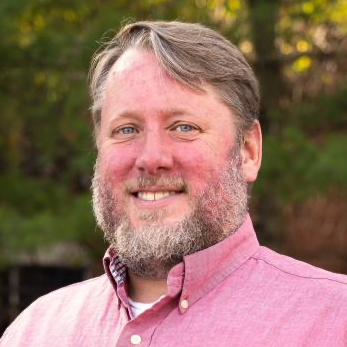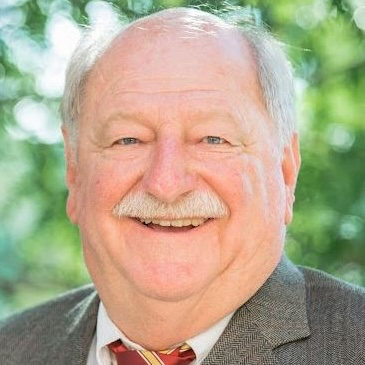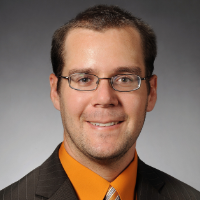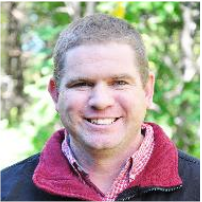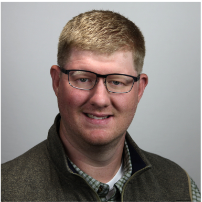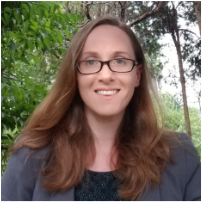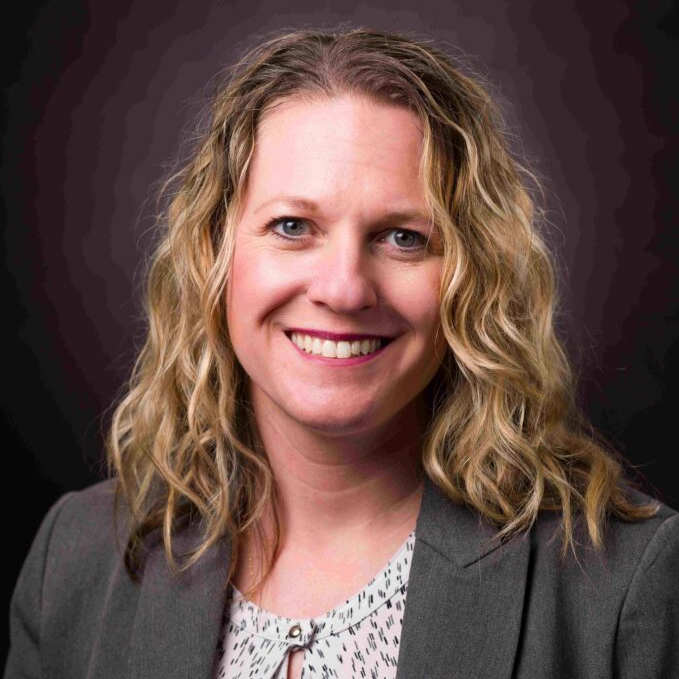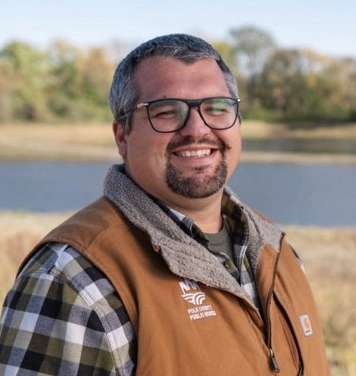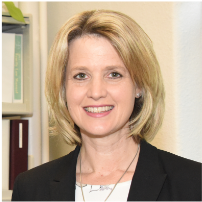Program Listing by CCA Category
CropsTV
Print the Season 5 program
New episodes are released weekly from January 7 through February 18, 2025. Release date for each topic indicates when the recorded program will be available for viewing. Program listings and schedule are subject to change due to speaker availability or technical issues beyond our control.
Season 5 closes on Tuesday, April 15, 2025 at 11:59 PM CDT. All viewing and CCA credit submissions must be completed prior to that time.
Program listings include amount of CCA credit and category following the title. CM=Crop management, PM=Pest management, NM=Nutrient management, SW=Soil and water management.
Want to see the Season 5 listings by release date? Click the button below.
Program listing by release date
Crop Management
-
101. Ag market outlook for 2025 and beyond (0.5 CM)
Chad Hart, professor and extension economist, Economics, Iowa State University
Release date: Tuesday, January 7, 2025
We will explore the factors currently shaping the ag economy and the various sectors that drive economic growth in the sector. We will investigate the connections among feed, fuel, and export markets and examine potential changes to federal agricultural policy (i.e., the Farm Bill). We will discuss the potential for agricultural profitability over the next few years and outline the challenges to reaching robust economic gains. -
102. Subseasonal to seasonal forecasting: Challenges in predicting the future (0.5 CM)
Madelynn Wuestenberg, extension specialist, weather and climate, Iowa State University Extension and Outreach
Release date: Tuesday, January 7, 2025
Join Madelynn on a deep dive into subseasonal and seasonal forecasting, where you will learn about the inputs in long term outlooks, how to consume products from the Climate Prediction Center, and take a look at what forecast models project into early 2025. Leave your crystal ball at home and learn more about the challenges with predicting the future, but how climate models can help give us key insights to global weather patterns. -
103. Relay intercropping: What is it and how does it work? (0.5 CM)
Mark Licht, associate professor and extension cropping systems specialist, Agronomy, Iowa State University
Release date: Tuesday, January 14, 2025
Relay intercropping is a new take on getting economic value out of small grains instead of just using them as a cover crop. This session will quickly explore the potential for using relay intercropping as well as some of the practices that can increase success. -
104. Optimizing forage availability with cover crops (0.5 CM)
Shelby Gruss, extension forage specialist and assistant professor, Agronomy, Iowa State University
Release date: Tuesday, January 14, 2025
This episode will cover how using cover crops as forage can be beneficial in many ways and address concerns with grazing cover crops. Additionally, we'll briefly discuss the selection process and management. -
105. Early bird gets the bean: Why planting dates matter (1.0 CM)
Shawn Conley, professor and State Soybean and Small Grains Specialist, University of Wisconsin, Madison
Release date: Tuesday, January 21, 2025
Plant soybean early is old news but planting before corn is heresy. In this presentation we will discuss the good, the bad and the ugly of planting your soybean crop first out of the gate. -
106. Marketing grain....old and new (0.5 CM)
Ryan Drollette, extension farm management field specialist, Iowa State University Extension and Outreach; Tim Christensen, extension farm management field specialist, Iowa State University Extension and Outreach
Release date: Tuesday, January 28, 2025
Join Ryan and Tim for a conversation on marketing decisions for old and new crop grain in 2025. -
107. Pasture trees: Design, establishment, management (0.5 CM)
Billy Beck, assistant professor and extension forestry specialist, Natural Resource and Ecology Management, Iowa State University
Release date: Tuesday, February 4, 2025
This episode will highlight tangible benefits of pasture trees to crop and livestock operations (e.g., shading, timber revenue), as well as ecosystem goods and services provision (e.g., carbon sequestration). In addition, an overview of key considerations for design, establishment, maintenance, and renovation of pasture trees will be provided. -
108. Citizen scientists in the Community Collaborative Rain, Hail and Snow (CoCoRaHS) Network and impacts on the US Drought Monitor process (1.0 CM)
Justin Glisan, State Climatologist of Iowa, Iowa Department of Agriculture and Land Stewardship
Release date: Tuesday, February 18, 2025
Precipitation is essential for life, and understanding where it may have poured rain or pounded a portion of a field with hail can be crucial to supporting many different interests. CoCoRaHS is a practical, enjoyable and useful activity that helps augment precipitation observations from the National Weather Service. Both networks are crucial for drought and wetness monitoring, particularly for the US Drought Monitor. -
109. Farmland values in a changing market (1.0 CM)
Rabail Chandio, assistant professor, Economics and extension economist, Iowa State University
Release date: Tuesday, February 11, 2025
We will explore the evolving landscape of farmland prices, driven by economic forces, interest rates, and shifting agricultural trends. Lets take a look at recent declines in Iowa’s land values, the factors influencing these changes, and their implications for landowners, investors, and policymakers. We will also talk about historical trends, rent-to-value dynamics, investor behaviors, and future outlooks for the farmland market.
Pest Management
-
201. Resistance is a sticky situation for soybean aphid (1.0 PM)
Erin Hodgson, professor and extension entomologist, Plant Pathology, Entomology and Microbiology, Iowa State University
Release date: Tuesday, January 7, 2025
Soybean aphid populations have fluctuated during the last few growing seasons but had a surge in 2024. Farmers noted poor suppression with certain rescue treatments. The status of insecticide resistance and effective management options will be reviewed in this session. -
202. Get the scoop on Asian copperleaf (0.5 PM)
Meaghan Anderson, extension field agronomist, Iowa State University Extension and Outreach
Release date: Tuesday, January 14, 2025
You may not have heard of Asian copperleaf, but Iowa farmers in at least eight counties are contending with this new species not known to be in any other crop fields in the United States. Farmers often spot this plant at harvest when they find a green carpet under the crop canopy. This session will address what we know about this species, what threat might it pose for Iowa farmers, and what we still have to learn to effectively manage it. -
203. Soybean diseases: A year of the unexpected (0.5 PM)
Daren Mueller, professor and extension crop plant pathologist, Plant Pathology, Entomology and Microbiology, Iowa State University
Release date: Tuesday, January 21, 2025
This presentation will outline what soybean diseases were problematic in Iowa in 2024. We also we discuss our attempts at finding red crown rot, which were unsuccessful. -
204. Potential strategies to mitigate yield drag in corn following a cereal rye cover crop (1.0 PM)
Alison Robertson, professor and extension crop plant pathologist, Plant Pathology, Entomology and Microbiology, Iowa State University
Release date: Tuesday, January 28, 2025
Cover cropping offers numerous environmental benefits and may contribute to more resilient crop production systems. Still, some farmers are hesitant to include cover crops in their production for various reasons including risk of reduced yield in the cash crop. We seek to understand what is causing reduced yields in corn following a cereal rye (CR) CC to optimize CC management. Current research on the effect of precision planting CC, N immobilization, and allelopathy on seedling disease and yield will be shared. -
205. European corn borers: New concerns for an old pest (0.5 PM)
Erin Hodgson, professor and extension entomologist, Plant Pathology, Entomology and Microbiology, Iowa State University
Release date: Tuesday, January 28, 2025
European corn borer (ECB) has been an economically important moth in Iowa cornfields since the 1940s. Since 1996, transgenic Bt corn hybrids have significantly reduced populations in the United States and Canada. Extensive injury has been reported outside of the Corn Belt, prompted a refresher in learning how to identify and scout for this old pest. -
206. Tools and tactics to manage waterhemp (1.0 PM)
Wesley Everman, assistant professor and extension weed specialist, Iowa State University
Release date: Tuesday, February 4, 2025
What are the best management practices for waterhemp? What are the key characteristics of controlling waterhemp successfully? These questions will be answered and practical management options will be given that you can implement in your operation. -
207. Out, damned spot! Out, I say (1.0 PM)
Alison Robertson, professor and extension crop plant pathologist, Plant Pathology, Entomology and Microbiology, Iowa State University
Release date: Tuesday, February 11, 2025
This session will review the National Predictive Modeling Tool Initiative and statewide corn disease management trials done in 2024. -
208. Drone spray and seeding update: Current research, opportunities, and challenges (1.0 PM)
Simer Virk, associate professor and extension specialist, precision ag and machine systems, Auburn University
Release date: Tuesday, February 18, 2025
The use of spray drones is expanding rapidly in agriculture. Information on spray drones for effective pesticide applications along with some considerations for optimal application parameters such as spray volume, height and swath will be shared. Seeding cover crops or dry granular material with drones will also be covered. -
209. EPA's herbicide strategy (1.0 PM)
Wesley Everman, assistant professor and extension weed specialist, Iowa State University
Release date: Tuesday, January 21, 2025
The EPA's Herbicide Strategy is an important new set of regulatory practices which will be required for using herbicides in the near future. An overview with some key points to consider will be presented.
Nutrient Management
-
301. Phosphorus, potassium, and lime decisions with low commodity prices (0.5 NM)
Virgil Schmitt, extension field agronomist, Iowa State University Extension and Outreach
Release date: Tuesday, January 7, 2025
Low commodity prices are prompting many farmers to scrutinize every crop input cost. Among those items being scrutinized are lime and phosphorus and potassium fertilizer. This presentation will examine how to receive the most Return on Investment for the fertilizer and lime dollar when commodity prices are low. -
302. Putting a price on poo: Getting manure value (0.5 NM)
Daniel Andersen, associate professor, Agricultural and Biosystems Engineering, Iowa State University
Release date: Tuesday, January 14, 2025
We'll cover typical manure nutrient concentration, how this translates into fertilizer value, understanding application costs, and agronomic decision making to help ensure you are getting maximum value. -
303. Unlocking the mystery: Managing manure variability (0.5 NM)
Daniel Andersen, associate professor, Agricultural and Biosystems Engineering, Iowa State University
Release date: Tuesday, February 4, 2025
Let's take a look at the variability of manure as a fertilizer source. This episode will touch on sampling procedures for testing manure and the vaiability of samples at the beginning versus the end of an application. Then a look at how that uncertainty translates into picking a rate with a look at some sensor technology in current research. -
304. Ever wonder about the value of sulfur for crops? Here are a few things to consider (1.0 NM)
Daniel Kaiser, associate professor, Soil, Water and Climate, University of Minnesota
Release date: Tuesday, February 18, 2025
Getting the most out of sulfur applications to crops isn't as simple as selecting the appropriate rate. Sulfur fertilizer source is one of the most overlooked factors that can impact whether you get a positive response to the nutrient or not. Incorporation of sulfur also can impact sources differently making it critical to discuss with your retailer what is applied to help make decisions on how to get the most out of your investment. -
305. Recognizing the signs: Identifying common nutrient deficiencies in row crops (0.5 NM)
Richard Roth, assistant professor, Agronomy and extension nitrogen science specialist, Iowa State University
Release date: Tuesday, January 28, 2025
Nutrient deficiencies can significantly impact the growth and yield of major crops. This presentation provides a visual guide to identifying common symptoms associated with nutrient stress, including discoloration, stunting, and abnormal leaf patterns. Understanding these signs can help farmers and agronomists take timely corrective action to optimize plant health and productivity. -
306. Nitrification inhibitors: What does the science say? (1.0 NM)
Richard Roth, assistant professor, Agronomy and extension nitrogen science specialist, Iowa State University
Release date: Tuesday, February 11, 2025
In this presentation we will provide a brief overview of what nitrification inhibitors are and how they behave in soils. We will discuss how these products impact the nitrogen cycle, the modes of action used to do so, and what past research says about the effectiveness of nitrification inhibitors. We will finish by reviewing our current research where we are comparing the efficacy of seven commercially available nitrification inhibitor products across different soils, soil moistures, soil temperatures, and product application rates.
Soil and Water Management
-
401. The Iowa Nutrient Reduction Strategy and finding the right nutrient reduction practices for your farm (0.5 SW)
Kay Stefanik, assistant director, Iowa Nutrient Research Center, Iowa State University
Release date: Tuesday, February 18, 2025
As we recently marked the 10-year anniversary of the Iowa Nutrient Reduction Strategy (INRS), it is apparent that much effort is still needed to meet the strategy’s 45% load reduction goals for nitrogen and phosphorus. This presentation will help viewers: (1) gain a better understanding of the Iowa Nutrient Reduction Strategy, including the purpose, needs, action items, and benefits of the strategy; (2) Learn about resources that can be used to create or expand a farm’s nutrient reduction plan; and (3) Learn how to model nutrient loss under current farm operations and proposed nutrient reduction practices. -
402. Expanding carbon sources for woodchip bioreactor (0.5 SW)
Michelle Soupir, professor, Agricultural and Biosystems Engineering, Iowa State University
Release date: Tuesday, January 28, 2025
I will discuss our forest to farm project, including different wood species and carbon materials that we are installing in edge-of-field denitrification bioreactors. I will show results from corn cob bioreactors as well as discuss different wood sources that could be used. -
403. The batch and build approach: Creating an easy button for conservation (0.5 SW)
John Swanson, water resources supervisor, Polk County, Iowa
Release date: Tuesday, January 21, 2025
Iowa has pioneered a new method of putting conservation on farms. Through the development of a new funding model, targeted outreach, and group installations this new model is spreading across the Midwest. Originally developed for saturated buffers, the program is now benefiting numerous other practices including cover crops, wetlands, and even urban soils. -
404. Corn carbon intensity and clean fuel tax credits (1.0 SW)
Alejandro Plastina, associate professor, Agricultural Finance and director, Rural and Farm Finance Policy Analysis Center, University of Missouri
Release date: To be announced
In 2025-2027, the federal government will provide tax credits to refineries producing "clean fuel". Farmers might be able to obtain a price premium for low-carbon-intensity corn. This session will discuss what corn farmers need to evaluate and present the tools to do so.
Professional Development
-
501. Top 10 tax considerations for farmers and rural landowners in 2025 (1.0 PD)
Kristine Tidgren, director, Center for Agricultural Law and Taxation, Iowa State University
Release date: Tuesday, February 4, 2025
Keeping up with tax changes can be challenging. In this episode Kristine provides her 'Top 10' list to help understand the biggest changes and implications for farmers and rural landowners.



